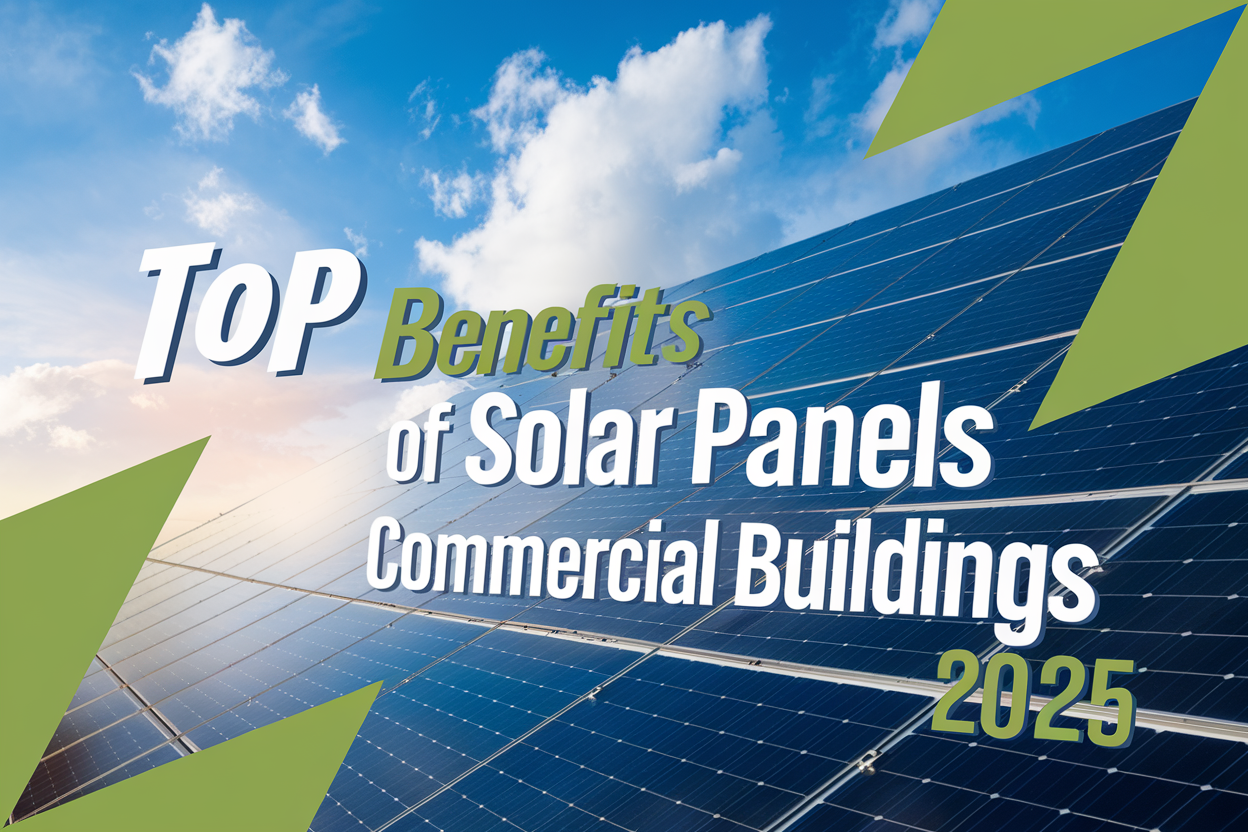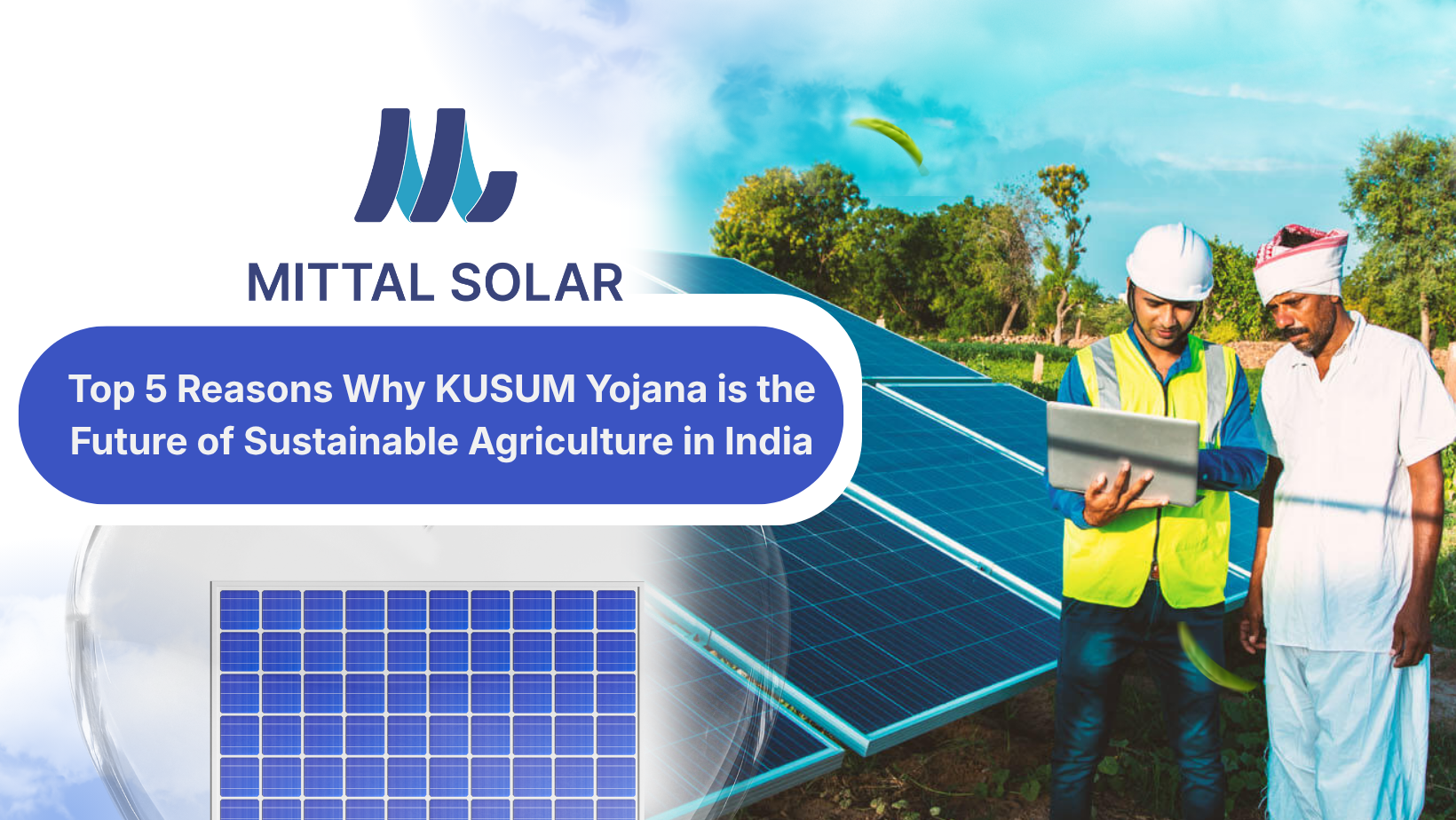Solar for Factories: The Smartest Cost-Saving Strategy of 2025
Commercial Solar
•
18 November, 2025
One of the largest operating costs for manufacturers is electricity. Industrial solar installers need a steady and dependable supply of electricity for everything from operating heavy machinery to powering assembly lines, cooling systems, lighting, and automation. However, the cost of grid electricity has skyrocketed in the past ten years, placing strain on commercial buildings, warehouses, and manufacturing facilities. For this reason, 2025 is turning out to be the year that industrial solar adoption takes off. Solar energy is becoming the most cost-effective option for Indian factories, making it more than just an environmentally friendly option. Industries now have the ideal chance to lower energy costs, boost profitability, and ensure long-term energy independence thanks to government backing, improving solar technology, and growing power demands. In this article, we examine the technology underlying solar, why it is the most cost-effective and operational choice for industries in 2025, and how companies can use solar to optimize their profits.
1. Rising Power Tariffs Are Eating Into Industrial Profits
India's factories pay some of Asia's highest industrial power bills. Every year, industries must deal with rising operating costs due to tariff hikes that range from 6% to 10%. This adds up to lakhs of rupees a month for facilities that operate machinery 10–24 hours a day. Solar offers a straightforward solution to this problem: fuel costs are zero, power costs remain fixed for more than 25 years, and electricity bills can be reduced by up to 60–80%. With support from experienced solar panel installers, industries can shift to clean and stable power at an affordable industrial solar panel price. For businesses looking for the Best Solar in Bhopal , solar energy enables enterprises to run more efficiently without sacrificing productivity—especially in 2025, when profitability is increasingly dependent on smart cost optimization.
2. Solar Provides Quick ROI and Guaranteed Savings
The quick return on investment (ROI) is a major element in factories' decision to use solar energy. Industrial solar systems now provide: ROI in three to four years More than 25 years of power production Nearly negligible maintenance costs Significant monthly energy savings Let's examine a straightforward example: A hypothetical example of a factory Installation of solar power: 500 kW Savings on bills each month: 4.5–5.5 lakh Savings every year: 50–60 lakh Repayment time: 3.2 years The factory receives free electricity for the following 20 years following the ROI period. Such consistent long-term financial rewards are not available from any other industrial venture.
3. Advanced Solar Technology in 2025 = More Power, Less Space
Solar technology has advanced significantly. Next-generation modules like this are advantageous for modern manufacturing. ✓ Solar panels of the N type These panels provide: Increased effectiveness, Better results in dim light Reduced deterioration, Greater longevity 100%, TOPCon Technology Because of its great durability and efficiency, TOPCon has emerged as the industry's go-to module, particularly for big industrial operations. Bifacial Panels These panels produce 10–15% more energy by generating power from both the front and back sides, making them perfect for ground-mounted systems and big industrial rooftops. These developments allow industries to maximize output and save money by obtaining more power from the same rooftop space.
4. Solar Helps eliminate Downtime with Smart Inverters
Downtime is not an option for industrial processes. That’s why modern solar systems come with smart, high-efficiency inverters that: Manage load intelligently Provide distant observation Detect faults automatically Offer a variety of high backup alternatives. Minimise power variations Because of the steady voltage output, solar-powered factories frequently see smoother power performance and increased machine efficiency.
5. Zero Production Interruption During Installation
Many factories believe that installing solar will interfere with their operations, however this is untrue. Expert EPC companies install solar with: ✔ No downtime in production ✔ No interruptions to machinery ✔ Safety-first protocols ✔ Quick installation schedules Without interfering with normal operations, the majority of industrial rooftop systems (200 kW–1 MW) may be built in 20–35 days.
6. Solar + Storage = 24×7 Power for Critical Industries
Manufacturing facilities, pharmaceutical facilities, and cold storage facilities are among the industries that need constant power. When solar and battery storage systems are used together, they guarantee: backup in the event of a grid outage Constant voltage Long-term dependability of power Freedom from the expenses of DG generators Solar + batteries is presently less expensive than operating huge DG generators due to rising diesel prices.
7. Government Support Makes Solar Even More Affordable
Industries still gain from huge industrial solar plants even though they might not get the same subsidies as household systems. Increased Depreciation Rate By claiming up to 40% depreciation in the first year, industries can significantly lower their taxable income. ✓ Nett Billing and Nett Metering Manufacturers can further lower their monthly bills by exporting excess electricity back to the grid. ✓ Industrial solar policies that vary by state Other incentives for commercial and **industrial solar adoption are provided by a number of states. Because of this, solar is a wise economical choice in 2025 and beyond.
8. Solar Helps Industries Achieve Sustainability Goals
Green operations are now required by global supply chains and enterprises. Solar power benefits factories: Cut down on your carbon footprint Observe environmental regulations. Draw in international customers Boost the reputation of your brand. Promote environmental, social, and governance (ESG) goals. Clean energy suppliers are now preferred by many businesses; solar gives manufacturing a competitive edge.
9. Industrial Solar is Scalable From 10 kW to 20 MW
Any industry, regardless of size, can use solar: 10–50 kW for small workshops. Factory sizes: medium: 100–500 kW 1–5 MW large industrial units Megastructures: 10–20 MW Because of its adaptability, solar is appropriate for a wide range of businesses, including manufacturing, cold storage, warehouses, steel plants, textile units, pharmaceuticals, engineering units, and more. Food Processing Parks for Logistics
10. Partnering With the Right EPC Company is Key
Solar is an investment that will last for more than 25 years. Performance is determined by component quality, installation, and maintenance. A trustworthy solar EPC partner guarantees: Precise load evaluation Appropriate engineering and design Superior panels and inverters Expert installation Frequent upkeep Long-term assurance of performance Your factory can save the most money and experience the least amount of stress with the correct partner.
Conclusion
The industrial energy landscape will undergo a significant change by 2025. Solar is being adopted by Indian factories at a historic rate because it provides the precise benefits that businesses require: reduced prices, increased efficiency, reliable electricity, and long-term savings. Solar is now more than just an environmentally friendly choice. It is currently the most profitable and astute cost-cutting measure for factories. If your sector wishes to ✔ Reduce energy costs by 60–80% ✔ Boost output ✔ Lower its carbon footprint ✔ Raise profits ✔ Become energy independent—then switching to solar power in 2025 is the best course of action. 📞 For site evaluation or consultation: +91 9630140159
Table of Content
- Introduction
- Rising Power Tariffs Are Eating Into Industrial Profits
- Solar Provides Quick ROI and Guaranteed Savings
- Advanced Solar Technology in 2025 = More Power, Less Space
- Solar Helps eliminate Downtime with Smart Inverters
- Zero Production Interruption During Installation
- Solar + Storage = 24×7 Power for Critical Industries
- Government Support Makes Solar Even More Affordable
- Solar Helps Industries Achieve Sustainability Goals
- Industrial Solar is Scalable From 10 kW to 20 MW
- Partnering With the Right EPC Company is Key
- Conclusion


